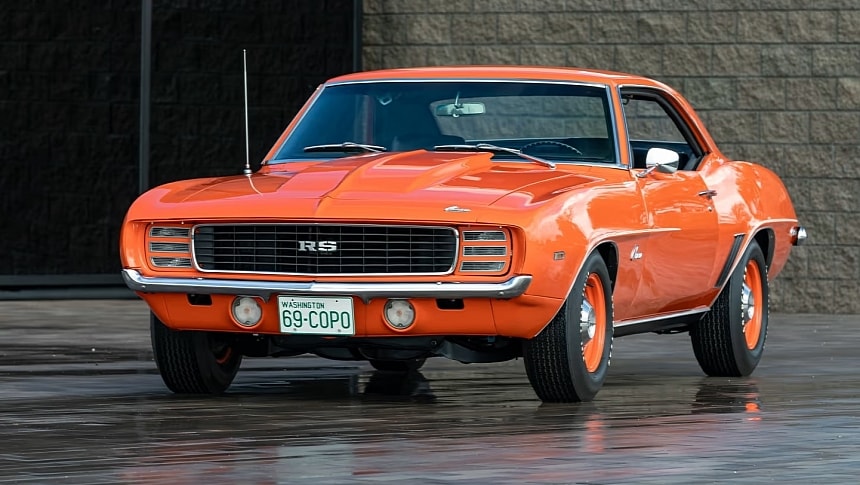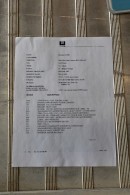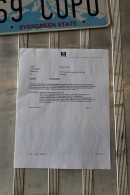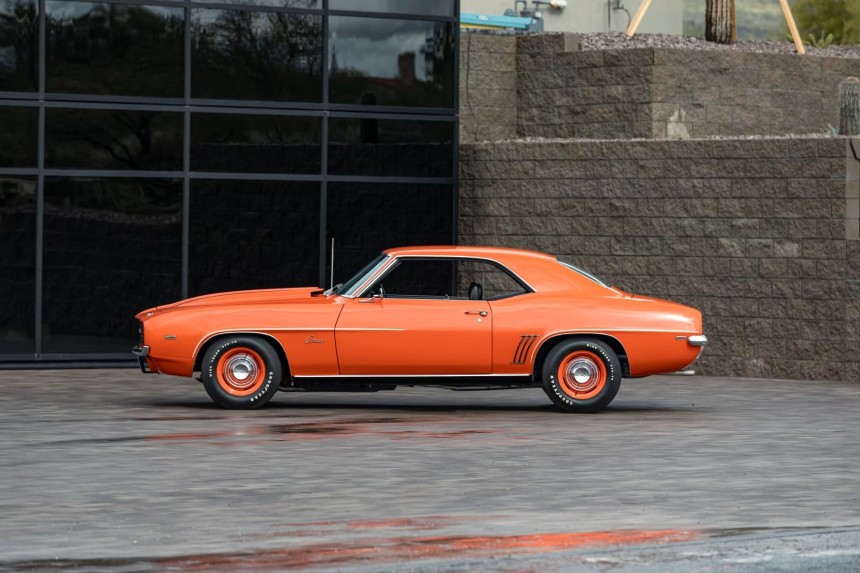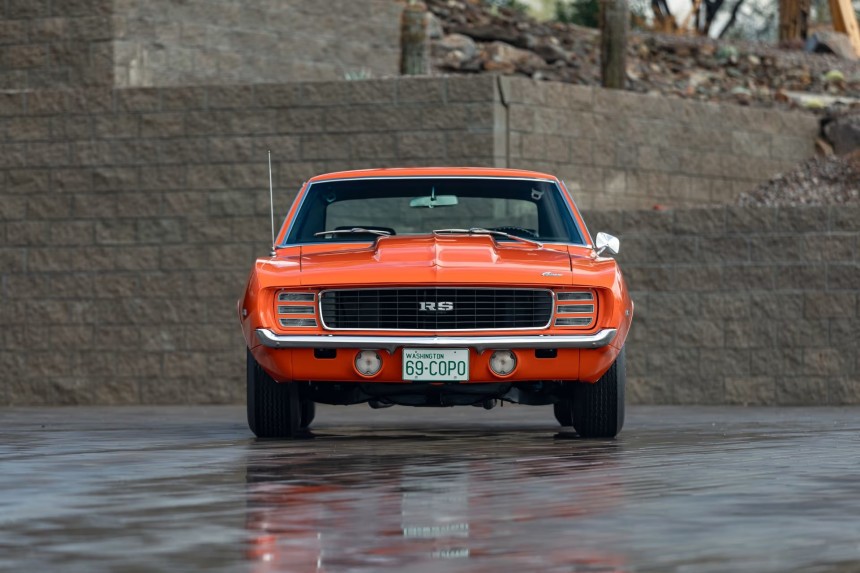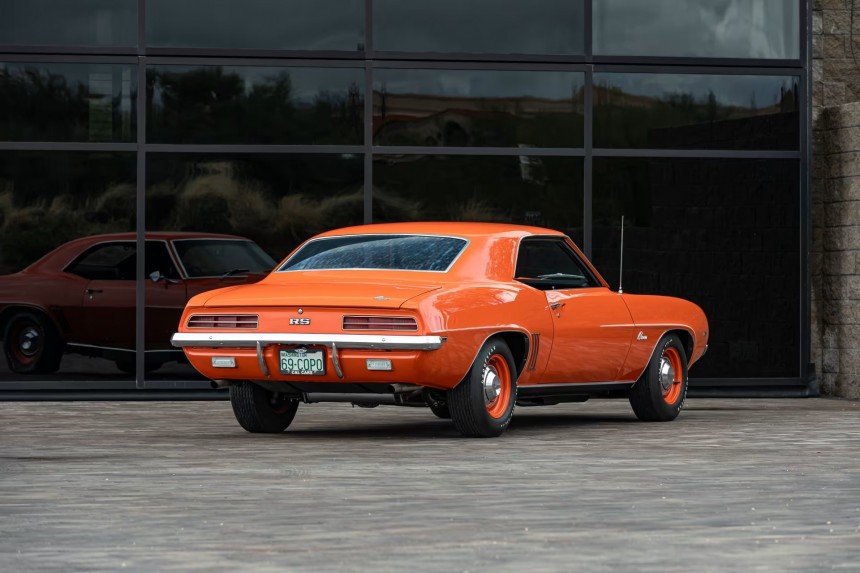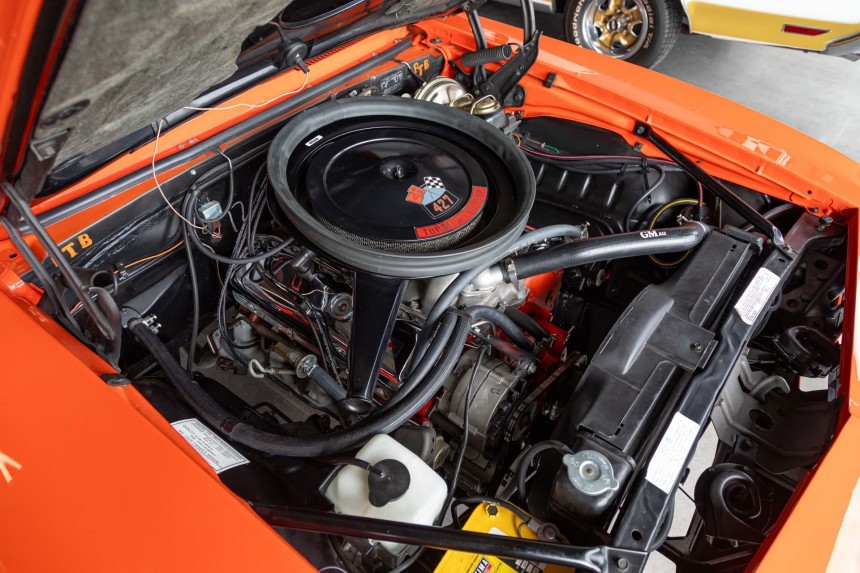In the late 1960s, a handful of Chevrolet dealers with friends inside the GM ivory tower worked their way around the bureaucratic moats and invented the ‘performance COPO’ cheat code. The Camaro has a special place among the Central Office Production Order legends, with 1,015 examples assembled in 1969. It was the year of the mythical ZL-1 war machine and its more down-to-earth twin cousin, the ‘other COPO,’ the L72.
Neither option appeared on the Regula Production Option (RPO) lists – that was the whole point of the COPO, to build cars that wouldn’t have otherwise existed. However, the system wasn’t meant for the (ab)use of hot-headed Chevrolet dealers with various time-based conditions, like incurable addictions to race-octane gasoline or obsessive-compulsive habits of not spending more than 12 seconds in a drag race.
The COPO was Chevrolet’s way of meeting fleet-sized orders – law enforcement, taxi companies, car rentals; you get the idea. Not racing (track or street) – remember that the year in question is 1969, and GM’s edict of 1963 to cut down all ties with performance motoring was still in effect.
However, 1969 was also the year of the Boss Nine - and that mean Ford Mustang was offered in street form. Chevrolet wasn’t about to let that slip unpunished – at least, some of its dealers weren’t going to simply look at a monstrous Ford demolish their own cars at the stoplight grand prix or in a sanctioned event.
Don Yenko and Fred Gibb are two of those Chevy salesmen who stood up for the Bow Tie’s honor and used the COPO to their advantage. Gibb is famous for creating the ZL-1 monster – a 1969 Camaro with the all-aluminum 427 big-inch (7.0-liter) V8. Meanwhile, Yenko did the same thing but took the cautious approach of slamming the ZL-1’s iron twin in Camaros – the L72 eight-cylinder powerhouse.
Production records aren’t explicitly helpful about the total COPO Camaros production in that year – incidentally, the only year of the super-performance model until Chevrolet brought back the system in 2012. However, with some mathematical deductions, the number settles at 1,066 engines (not cars!) – ZL-1 and L72 put together.
The ZL-1’s are fortunately known – 69 of them were produced – leaving the L72 total to 997. Again, this is the number of eight-cylinder powerplants, not the actual cars equipped with them, and includes service and warranty engines. The 1969 COPO Camaro L72 production batch is definitely lower than that value (997 is the final number compiled by the good folks at camaros.org).
However, we can go up another route and take one particular 1969 COPO Camaro as an example. It has an interesting history – both ancient and recent – and is critical evidence of the ‘Less than 1,015 COPO Camaros built’ case. The car was bought new in Canada, and within two years’ time, it was serviced under warranty not once but twice for the same reason.
Care to guess what the issue was? A blown 427-cubic-inch V8 – so the Chevy brawler ended up with a CE engine – twice (CE is Counter Exchange, meaning a replacement motor that’s a replica of the original, specs-wise). In 1973, the replacement’s replacement 427-cube was again replaced with a small-block 350.
Until 2009, the car had six owners – one bought the special Camaro in 1980 (he was 18 at the time) and kept it in a barn from 1988 until 2009. The long-time owner performed a restoration in the 80s, putting another small-block in the Camaro before parking it in 1988 when he left his native Canada for Singapore. He kept the car to original specs – Hugger Orange livery and black interior.
In 2009, the owner moved again, this time to Houston, Texas, and took the car with him. He then discovered that his car was a COPO, the rare and coveted 1969-only superspecial HEMI nemesis. The man suspected his Camaro was originally a 396 SS that the dealer upcycled to a 427. The gearhead wrote to GM Canada for details, and, much to his pleasant surprise, the results came back exceeding all expectations.
Although the ZL-1 was way more powerful than the L72, the latter was no joke. 425 hp and 460 lb-ft of crank twist was a serious dragstrip weapon, with skilled drivers scoring low 12s or even high 11s over a quarter mile. Since the L72 package included in COPO 9561 was $489.75, it’s a no-brainer why the ‘other COPO Camaro’ sold exceptionally well compared to the fabled ZL-1.
For reference, the all-aluminum NASCAR engine that adorned sixty-nine ’69 Camaros (COPO 9560) was a heart-stumping $4160.50. that’s the cost of the High-Performance Unit alone – the cars retailed for sums north of $7,300.
The 9651 in this story had gone under the radar until a month ago when it was sold at the Glendale, Arizona, auction for $190,000 (excluding the buyer’s premium of 10%, which takes the total value to $209,000). It’s a bit above what a restored 1969 Chevrolet Camaro COPO 9651 usually sells for. Still, it didn’t deter the buyer from putting it up for sale again.
At this time, the eBay listing sits at $100,000, with three more days left. Needless to say, the reserve has not been met – at the March auction, the ‘Reserve Off’ bar was $180,000. It would be safe to assume that this bid has the same margin.
Although the factory-original engine is no longer in the car, there’s a factory replacement 427 in there, together with the rest of the COPO 9651 goodies: a Rock-Crusher transmission, a 4.10 Positive Traction differential, power brakes with discs up front, and the cowl induction hood. The cherry-on-top is the Rallye Sport package, easily identifiable by the concealed headlights and the bold ‘RS’ in the middle of the blacked-out grille.
The COPO was Chevrolet’s way of meeting fleet-sized orders – law enforcement, taxi companies, car rentals; you get the idea. Not racing (track or street) – remember that the year in question is 1969, and GM’s edict of 1963 to cut down all ties with performance motoring was still in effect.
However, 1969 was also the year of the Boss Nine - and that mean Ford Mustang was offered in street form. Chevrolet wasn’t about to let that slip unpunished – at least, some of its dealers weren’t going to simply look at a monstrous Ford demolish their own cars at the stoplight grand prix or in a sanctioned event.
Production records aren’t explicitly helpful about the total COPO Camaros production in that year – incidentally, the only year of the super-performance model until Chevrolet brought back the system in 2012. However, with some mathematical deductions, the number settles at 1,066 engines (not cars!) – ZL-1 and L72 put together.
The ZL-1’s are fortunately known – 69 of them were produced – leaving the L72 total to 997. Again, this is the number of eight-cylinder powerplants, not the actual cars equipped with them, and includes service and warranty engines. The 1969 COPO Camaro L72 production batch is definitely lower than that value (997 is the final number compiled by the good folks at camaros.org).
Care to guess what the issue was? A blown 427-cubic-inch V8 – so the Chevy brawler ended up with a CE engine – twice (CE is Counter Exchange, meaning a replacement motor that’s a replica of the original, specs-wise). In 1973, the replacement’s replacement 427-cube was again replaced with a small-block 350.
Until 2009, the car had six owners – one bought the special Camaro in 1980 (he was 18 at the time) and kept it in a barn from 1988 until 2009. The long-time owner performed a restoration in the 80s, putting another small-block in the Camaro before parking it in 1988 when he left his native Canada for Singapore. He kept the car to original specs – Hugger Orange livery and black interior.
Although the ZL-1 was way more powerful than the L72, the latter was no joke. 425 hp and 460 lb-ft of crank twist was a serious dragstrip weapon, with skilled drivers scoring low 12s or even high 11s over a quarter mile. Since the L72 package included in COPO 9561 was $489.75, it’s a no-brainer why the ‘other COPO Camaro’ sold exceptionally well compared to the fabled ZL-1.
For reference, the all-aluminum NASCAR engine that adorned sixty-nine ’69 Camaros (COPO 9560) was a heart-stumping $4160.50. that’s the cost of the High-Performance Unit alone – the cars retailed for sums north of $7,300.
At this time, the eBay listing sits at $100,000, with three more days left. Needless to say, the reserve has not been met – at the March auction, the ‘Reserve Off’ bar was $180,000. It would be safe to assume that this bid has the same margin.
Although the factory-original engine is no longer in the car, there’s a factory replacement 427 in there, together with the rest of the COPO 9651 goodies: a Rock-Crusher transmission, a 4.10 Positive Traction differential, power brakes with discs up front, and the cowl induction hood. The cherry-on-top is the Rallye Sport package, easily identifiable by the concealed headlights and the bold ‘RS’ in the middle of the blacked-out grille.
